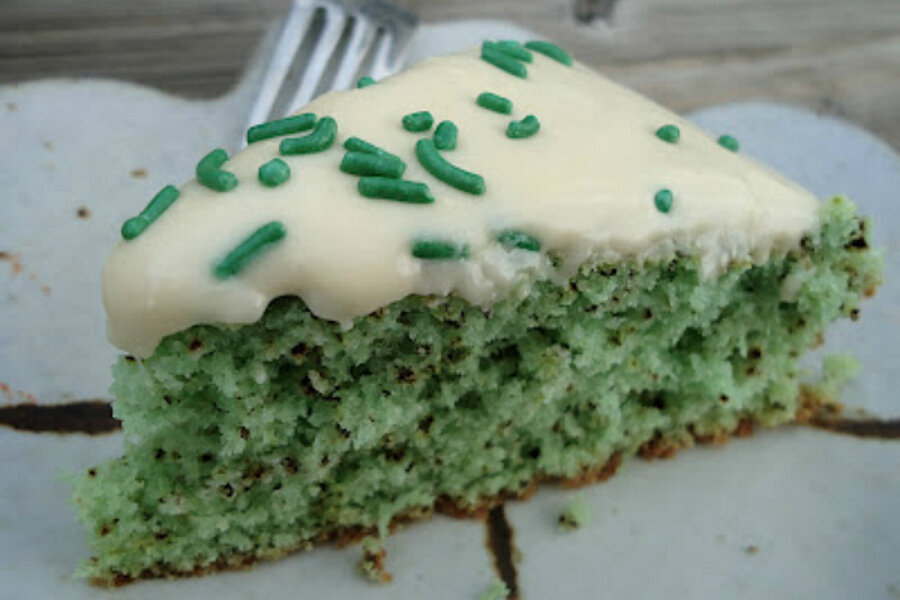By Mollie Zapata, Eat. Run. Read.
For the Cake:
1/4 cup (1/2 stick) unsalted butter, softened
1 cup all-purpose flour
3/4 cup granulated sugar
1 teaspoon baking powder
1/2 teaspoon baking soda
1/4 teaspoon salt
1-1/2 tablespoons green tea leaves (about 2 tea bags)
1/2 cup milk
1 large egg
1 teaspoon pure vanilla extract
Green food coloring and green sprinkles (optional)
For the Glaze:
2 cups powdered sugar
1/4 cup (1/2 stick) unsalted butter, softened
1 teaspoon vanilla
2-4 tablespoons as needed
Preheat oven to 325 degrees F.
Grease and flour a 9-inch baking pan.
With an electric mixer, or by hand, cream together butter, flour, sugar, baking powder, baking soda, pinch of salt, and green tea. Mix on medium speed until the mixture is slightly coarse and sandy. This takes about 5 minutes.
Add in milk, egg, and vanilla extract. And beat until incorporated and the batter is smooth. Drop in food coloring until the batter reaches your desired green-ness (keep in mind that color tends to dull in baking, so if the batter looks a bit too bright you’re probably OK).
Pour batter into prepared pan.
Bake for 22 minutes, or until a skewer inserted in the center comes out clean.
Remove from the oven and allow to cool in the pan for 10 minutes. Remove from the pan to cool completely before frosting.
To make the glaze: Beat sugar, butter, and vanilla. Add milk one tablespoon at a time until it reaches a glaze-ish consistency. Spread the frosting on top of the cake and decorate with sprinkles if you’re using them.








